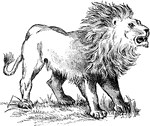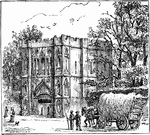
Abbey Gate, Bury St. Edmunds
In the center of Bury St. Edmunds lies the remains of an abbey, surrounded by the Abbey Gardens, a park.…

St. Aldhelm's Church, Bradford-on-Avon
Notable is the Saxon church (dedicated to St. Laurence), which may have been founded by St. Aldhelm…

The Tomb of Edward the Confessor
King Edward the Confessor (c. 1003 – 5 January 1066), son of Ethelred the Unready, was the penultimate…
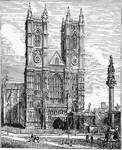
Westminster Abbey
The stone Abbey was built around 1045–1050 by King Edward the Confessor and was later rebuilt…
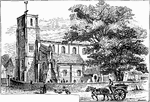
Harold's Church at Waltham
Waltham Abbey was founded in 1030 and a building was constructed on the site by Harold Godwinson (aka…
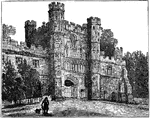
Battle Abbey Gateway
In 1070 Pope Alexander II ordered the Normans to do penance for killing so many people during their…

Odo of Bayeux
Odo of Bayeux (c. 1036 – February 1097, Palermo), Norman bishop and English earl, was the half-brother…
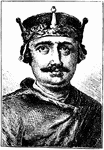
William Rufus
William II (c. 1056 – 2 August 1100), the third son of William I of England (William the Conqueror),…
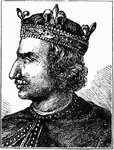
Henry the First
Henry I (c. 1068/1069 – 1 December 1135) was the fourth son of William I the Conqueror, the first…
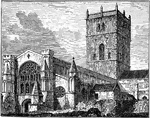
St. David's Cathedral
The monastic community was founded by Saint David, Abbot of Menevia, who died in AD589. Between AD645…
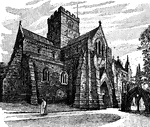
Carlisle Cathedral
It was begun during the reign of King Henry I by the first Bishop of Carlisle, the Englishman Athelwold…
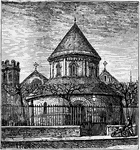
St. Sepulchre's, Cambridge
The original Saxon church on the site was dedicated to St. Edmund the King and Martyr. During the Crusades…

Henry II
Henry II of England (5 March 1133 – 6 July 1189) ruled as King of England (1154–1189). Henry…
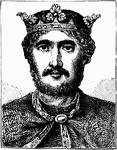
Richard I
Richard I (8 September 1157 – 6 April 1199) was King of England from 6 July 1189 until his death.…
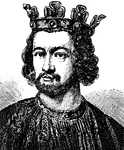
King John
John (24 December 1167 – 19 October 1216) reigned as King of England from 6 April 1199, until…

Magna Charta Island
Magna Carta Island is an island in the River Thames in England, on the reach above Bell Weir Lock. It…
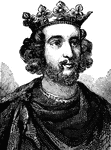
Henry III
Henry III (1 October 1207 – 16 November 1272) was the son and successor of John "Lackland" as…

Simon de Montfort
Simon de Montfort, 6th Earl of Leicester (1208 – August 4, 1265), was the principal leader of…

Chapter House, Westminster Abbey
The stone Abbey was built around 1045–1050 by King Edward the Confessor, who had selected the site…
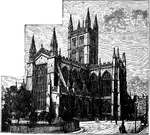
Bath Abbey (Cathedral) Church
The Abbey Church of Saint Peter, Bath, commonly known as Bath Abbey, is an Anglican parish church and…

Coronation Chair
King Edward's Chair, sometimes known as St. Edward's Chair or The Coronation Chair, is the throne on…
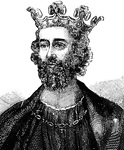
Edward II
Edward II, (April 25, 1284 – September 21, 1327?) of Caernarfon, was King of England from 1307…
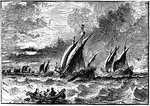
Fourteenth Century Ships
In the 14th and 15th centuries seamen's guilds were formed in Bristol, King's Lynn, Grimsby, Hull, York…
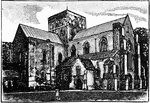
Holy Cross Church, Near Winchester
The Hospital of St. Cross is a medieval almshouse in Winchester, England, founded between 1133 and 1136…

Richard II
Richard II (6 January 1367 – ca. 14 February 1400) was King of England from 1377 until he was…
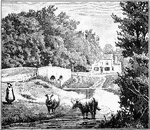
Bridge over the Swift, Lutterworth
The town was granted its Market Charter in 1214 by King John and continues to hold a market to this…
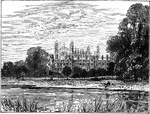
Eton College, Near Windsor
Eton College was founded in 1440 by Henry VI as a charity school to provide free education to seventy…

King's College Chapel, Cambridge
Henry VI planned a university counterpart to Eton College, the chapel being the only portion that was…
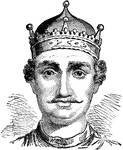
William I of England
William I of England (1027 – 9 September 1087), better known as William the Conqueror, was Duke…
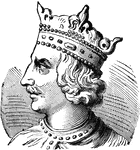
Henry I of England
Henry I (c. 1068/1069 – 1 December 1135) was the fourth son of William I the Conqueror, the first…
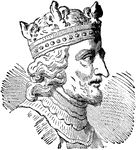
Stephen I of Hungary
Saint Stephen I was Grand Prince of the Magyars (997-1001) and the first King of Hungary (1001-1038).…

Richard I of England
Richard I (8 September 1157 – 6 April 1199) was King of England from 6 July 1189 until his death.…
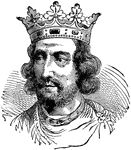
Henry III of England
Henry III (1 October 1207 – 16 November 1272) was the son and successor of John "Lackland" as…

Edward I (Longshanks)
Edward I (17 June 1239 – 7 July 1307), popularly known as Longshanks, achieved historical fame…
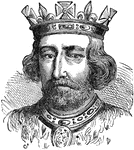
Edward II of England
Edward II, (April 25, 1284 – September 21, 1327) of Caernarfon, was King of England from 1307…
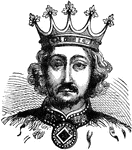
Richard II of England
Richard II (6 January 1367 – ca. 14 February 1400) was King of England from 1377 until he was…
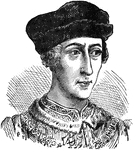
Henry V of England
Henry V (16 September 1386 – 31 August 1422) was one of the most significant English warrior kings…
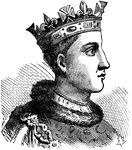
Henry VI of England
Henry was the only child and heir of King Henry V of England and therefore great things were expected…
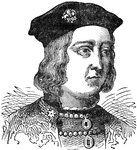
Richard IV of England
Edward of York was born on April 28, 1442, at Rouen, France (in the Chateau de Rouen), the second son…
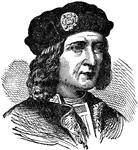
Richard III of England
Richard III (2 October 1452 - 22 August 1485) was King of England from 1483 until his death. He was…
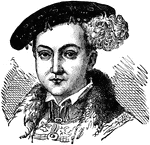
Edward VI of England and Ireland
Edward VI (12 October 1537 - 6 July 1553) became King of England and Ireland on 28 January 1547 and…
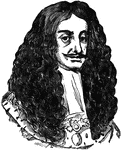
Charles II
Charles II (Charles Stuart; 29 May 1630 - 6 February 1685) was the King of England, Scotland, and Ireland.
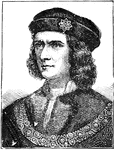
Richard III of England
Richard III (2 October 1452 – 22 August 1485) was King of England from 1483 until his death. He…

Henry VII of England
Henry VII (January 28, 1457 – April 21, 1509), King of England, Lord of Ireland (August 22, 1485…
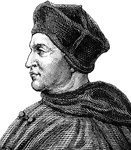
Thomas Cardinal Wolsey
Thomas Cardinal Wolsey (c.1470~1471 – November 28 or November 29, 1530), who was born in Ipswich,…
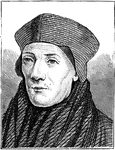
John Cardinal Fisher
John Cardinal Fisher (c.1469 – 22 June 1535), from 1935 Saint John Fisher, was an English Catholic…
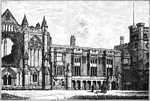
Newstead Abbey
Newstead Abbey, in Nottinghamshire, England, originally an Augustinian priory, is now best known as…
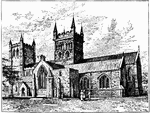
Wimborne Minster
Wimborne Minster, known locally as the Minster, is the parish church of Wimborne, Dorset, England. The…
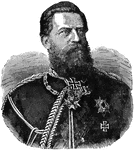
Frederick III, German Emperor
Frederick III (October 18, 1831 - June 15, 1888), was German Emperor and King of Prussia, ruling for…
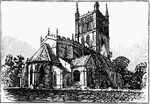
Pershore Abbey
Between AD 681 and 689, King æthelred of Mercia gave estates at Pershore to the Bishop of Worcester…

Royal Palace, Madrid
The Royal Palace of Madrid is the official residence of the King of Spain, located in Madrid. King Juan…
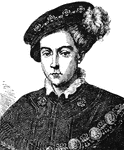
Edward VI of England
Edward VI (12 October 1537 – 6 July 1553) became King of England and Ireland on 28 January 1547…
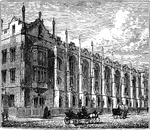
Edward VI's School at Birmingham
King Edward's School is an independent secondary school in Birmingham, England, founded by King Edward…
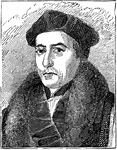
Archbishop Thomas Cranmer
Thomas Cranmer (2 July 1489 – 21 March 1556) was a leader of the English Reformation and Archbishop…
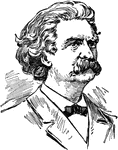
Samuel Langhorne Clemens
American writer who wrote classics such as The Adventures of Huckleberry Finn, The Adventures of Tom…
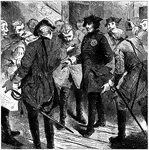
Frederick II of Prussia
An illustration of Frederick II of Prussia attempting to find lodging for the evening. Frederick II…

James the First
He ruled in Scotland as James VI from 24 July 1567, when he was only one year old, succeeding his mother…
Hampton Court, 17th Century
Hampton Court Palace is a former royal palace in the London Borough of Richmond upon Thames, south west…
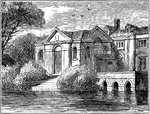
Gunpowder Conspirators' House, Lambeth
The Gunpowder Plot of 1605, or the Powder Treason, as it was known at the time, was a failed assassination…
